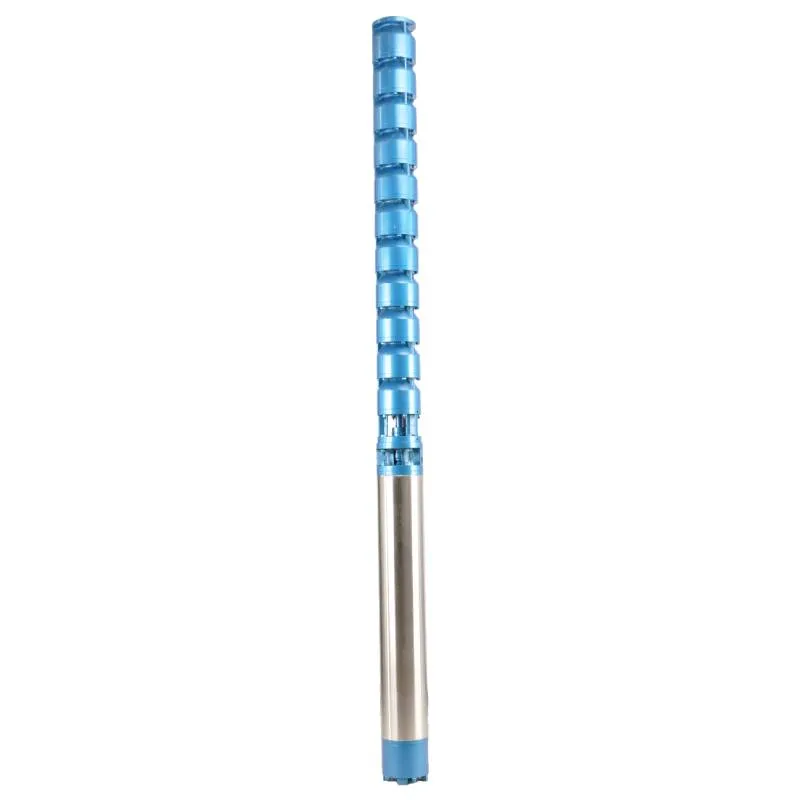10 сар . 30, 2024 12:45 Back to list
how does a submersible well pump work
How Does a Submersible Well Pump Work?
Submersible well pumps are essential tools for extracting water from deep underground sources. These powerful devices are uniquely designed to sit below the water surface, functioning in a way that maximizes efficiency and minimizes the need for maintenance. Understanding how a submersible well pump operates involves examining its key components and the principles of fluid dynamics that govern its performance.
How Does a Submersible Well Pump Work?
The operation of a submersible well pump begins with the motor. When activated, the motor turns a drive shaft that is connected to an impeller. The impeller is a rotating component that creates a centrifugal force, pushing water upwards through the pump. The design of the impeller is crucial; it needs to be optimized for the specific flow rate and pressure required for effective water extraction.
how does a submersible well pump work

Water enters the submersible well pump through intake holes located at the base of the pump. As the impeller spins, it draws water in and accelerates it outward towards the pump's discharge head. This movement generates a significant amount of pressure, enabling the water to travel upwards through the discharge piping. The combination of centrifugal force and the sealed environment of the pump ensures that water can be delivered from depths that would be unfeasible for other types of pumps.
Another significant aspect of submersible well pumps is their ability to handle varying water levels. As groundwater levels fluctuate due to seasonal changes or usage patterns, the pump's design allows it to continue operating effectively as long as there is sufficient water to maintain prime. Most submersible pumps have built-in check valves that prevent backflow, ensuring that water does not flow back into the well once it has been pumped to the surface.
In addition to its operational efficiency, a submersible well pump is relatively easy to install and maintain. Most installations require minimal surface equipment, as the pump and motor are housed below ground. Routine maintenance typically involves checking electrical connections and ensuring that the discharge piping remains clear of obstructions. Depending on the quality of water and usage, the lifespan of submersible well pumps can range from 10 to 15 years or more.
In summary, the operation of a submersible well pump relies on its cleverly designed components and the efficient use of principles from fluid dynamics. By combining a powerful motor with a well-designed impeller system that operates submerged, these pumps efficiently lift water from significant depths while minimizing energy consumption. As a result, submersible well pumps have become a preferred choice for both residential and agricultural applications where reliable access to groundwater is essential.
-
Water Pumps: Solutions for Every Need
NewsJul.30,2025
-
Submersible Well Pumps: Reliable Water Solutions
NewsJul.30,2025
-
Stainless Steel Water Pumps: Quality and Durability
NewsJul.30,2025
-
Powerful Water Pumps: Your Solution for Efficient Water Management
NewsJul.30,2025
-
Oil vs Water Filled Submersible Pumps: Which is Better?
NewsJul.30,2025
-
Deep Well Pumps: Power and Reliability
NewsJul.30,2025
-
 Water Pumps: Solutions for Every NeedWhen it comes to handling dirty water, the dirty water pump is a must-have.Detail
Water Pumps: Solutions for Every NeedWhen it comes to handling dirty water, the dirty water pump is a must-have.Detail -
 Submersible Well Pumps: Reliable Water SolutionsWhen it comes to ensuring a reliable water supply, submersible well pumps are a top choice.Detail
Submersible Well Pumps: Reliable Water SolutionsWhen it comes to ensuring a reliable water supply, submersible well pumps are a top choice.Detail -
 Stainless Steel Water Pumps: Quality and DurabilityWhen it comes to choosing a water pump, the stainless steel water pump price is a crucial factor.Detail
Stainless Steel Water Pumps: Quality and DurabilityWhen it comes to choosing a water pump, the stainless steel water pump price is a crucial factor.Detail
